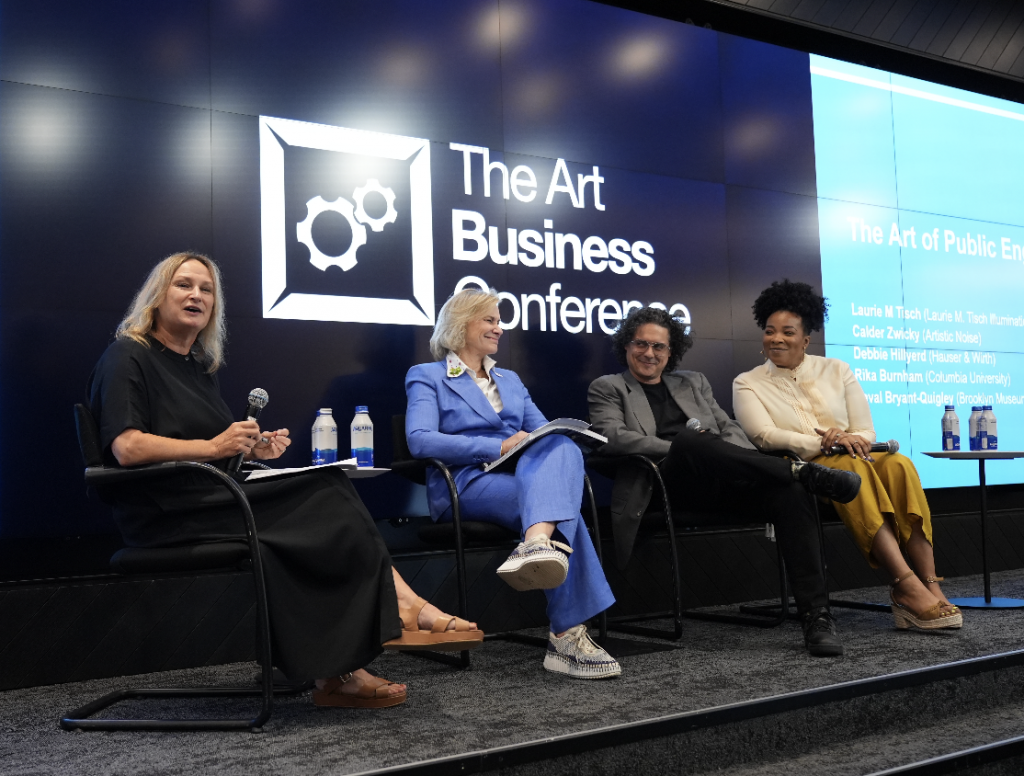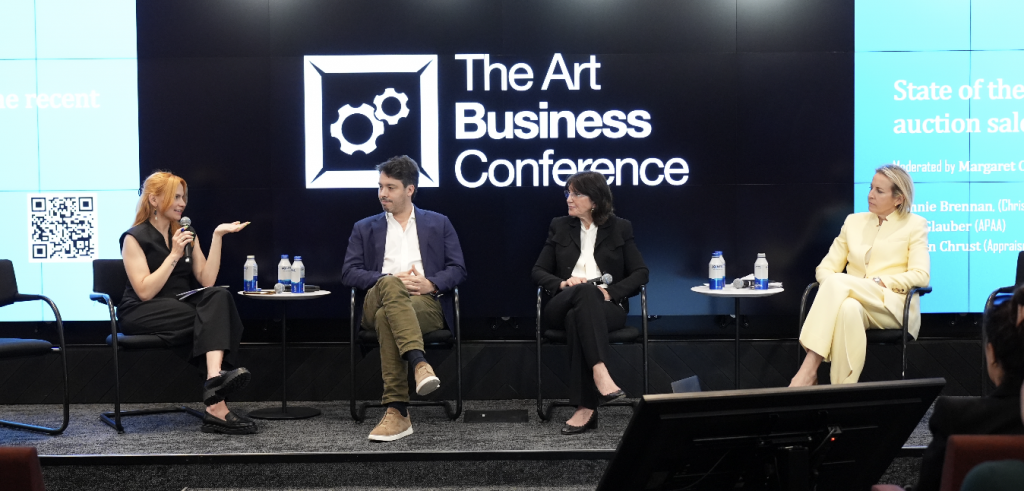Market
5 Takeaways From the Art Business Conference, New York
The market is ‘re-learning’ the value of a dollar, firms are finding new clients through inventive engagement, and other insights from the event

The market is ‘re-learning’ the value of a dollar, firms are finding new clients through inventive engagement, and other insights from the event

Riah Pryor

Artnet was an official media partner of the Art Business Conference, New York, May 23–25, 2024.
The fifth edition of the Art Business Conference, New York, now part-owned by the cultural investment fund Art Nova, took place last week. Here are five takeaways from the panels.
1. The Market Is Experiencing a Return to Reality
Following the city’s marquee auctions, which the conference’s chair, Julia Halperin, noted were down 22 percent from last year, panelists seemed to agree that the market is undergoing a degree of recalibration.
“Collectors are being more thoughtful, and not giving into the sheer deluge and volume and pacing of the art market, especially in the primary market, that we’ve seen over the last couple of years,” Alex Glauber, the president of the Association of Professional Advisors, said during one panel. He likened this new market reality to the moment when “your parents tried to teach you the value of a dollar.”
2. The Future Will Only Be as Good as Our Data
Several panels highlighted data as a cornerstone for growth in the art market. But amid a discussion of AI’s potential for the trade, Lindsey Schneider, the executive director of the International Foundation for Art Research, noted that any technology is only as effective as the people using it. “I don’t think it will replace humans,” she said of AI. “Garbage in, garbage out. So, training it on larger data sets will offer the best way forward for all of us.”
Schneider detailed a case study in which her group’s concerns over a supposed 1913 work by Kazimir Malevich with a hazy provenance were confirmed by AI analysis, and explained how museums are beginning to use digital tools to screen for problematic works in their collections.
While considering new business models for content production, a panel on the future of art media touched on the importance of both data and high-quality analysis. Josh Baer, of the Baer Faxt, perhaps said it best: “We’re over informed, but undereducated.”

The keynote panel on the art market with, left to right, moderator Margaret Carrigan (of Artnet News), Alex Glauber (the Association of Professional Art Advisors), Sharon Chrust (the Appraisers Association of America), and Bonnie Brennan (Christie’s). Photo courtesy of the Art Business Conference.
3. Engagement Must Be a Continuous Process
Discussions on public engagement by New York charities and cultural institutions underscored the roles that art can play in driving social change. “I want to cultivate wonderment,” Laval Bryant-Quigley, the Brooklyn Museum’s director of community engagement and partnerships, said. “I want people to experience joy, I want to expand the narratives, I want to drive action.”
The need to engage new audiences and collectors emerged as a key theme in a panel on leadership in the art world, moderated by Cat Manson, an executive coach. Amanda Lo Iacono, deputy CEO at Phillips, spoke about her team’s astonishment at the popularity of their Dropshop initiative, which allows artists to offer works directly to collectors and collect resale royalties if they are subsequently sold at the auction house.
Lo Iacono said that 60 percent of Dropshop clients have been new to Phillips. Many of those buyers “have been engaged with Philips for a long period of time, but never actually transacted,” demonstrating that perceived barriers to entry with auction can be dispelled,” she said. Meanwhile, Bonnie Brennan, Christie’s president of the Americas, said that, last year, 64 percent of her house’s new clients were millennials or younger.
4. Trust Is King
Amid all the talk of the many changes and opportunities in the market right now, the continued importance of trust was emphasized. The biggest challenge to the widespread embrace of new technologies is users’ trust (or lack of trust) in them. Auction staffers said that clients’ trust in them makes it possible to ride out turbulent socioeconomic times. And amid confusion and spin in the industry, journalists’ trustworthiness is their trump card.
5. Crime Sometimes Pays
In a market built on trust, the consequences for breaching it are sometimes less severe than one might expect. During a panel on fraud in the art world, Sullivan and Cromwell partner Sharon Levin Cohen mentioned cases of convicted criminals receiving payments from production companies for their stories (and arguments that those proceeds should be forfeited).
However, the panel was reassuringly specific about civil and criminal responses to wrongdoing. “There are some things the government can’t do that we as civil litigators can, and some things that the government can do that we as civil litigators cannot,” Wendy Lindstrom, a partner at Mazzola Lindstrom, said.
The discussion went on to outline how electronic devices can be seized from suspects as they enter or leave a country and the use of mutual legal assistance treaty by U.S. authorities to obtain information: Words to the wise.